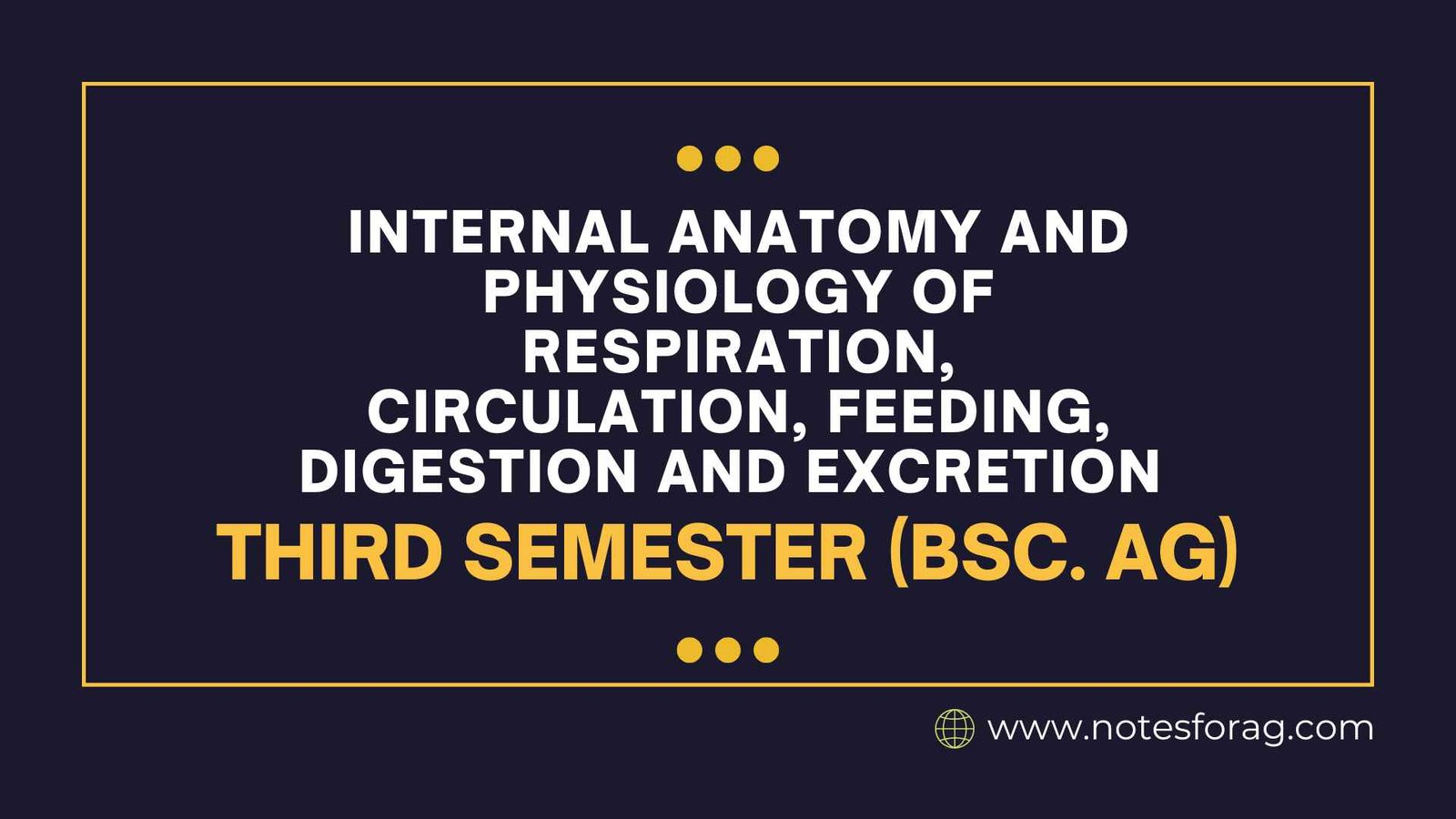The internal anatomy and physiology of respiration, circulation, feeding, digestion, and excretion are interconnected systems that sustain life. The respiratory system supports gas exchange by delivering oxygen and eliminating carbon dioxide. The circulatory system carries oxygen, nutrition, and wastes throughout the body. Feeding and digestion entails breaking down food into vital nutrients that are taken into the bloodstream for energy. The excretory system eliminates metabolic waste and regulates fluid and electrolyte levels. These systems operate together to maintain homeostasis, which is essential for cellular function and general bodily health.
Table of Contents
Introduction to Internal Anatomy
Internal anatomy is the complex structure of the organs and tissues within the body that work together to sustain life. Each organ is a component of a larger system, such as the respiratory, circulatory, digestive, and neurological systems, which all work together. These internal anatomy, such as the heart, lungs, stomach, and kidneys, provide specialized functions in breathing, blood circulation, digestion, and waste removal. Understanding internal anatomy is essential for understanding how the body functions as a whole, with each system contributing to general health and maintaining homeostasis. Below is an overview of how these internal anatomy function and interact within the body:
Respiratory System
The respiratory system’s main function is gas exchange, which provides oxygen to the blood and removes carbon dioxide. This system has the following anatomy and physiology:

- Anatomy:
- Nasal Cavity: Filters, warms, and humidifies the air.
- Pharynx and larynx: Directs air to the lungs while preventing food from entering the airways.
- Trachea: A windpipe connects the neck and lungs.
- Bronchi and bronchioles: Branching tubes that connect to the lungs.
- Lungs: Alveoli are microscopic air sacs that allow gas exchange to occur.
- Physiology:
- Inhalation: The diaphragm contracts, widening the chest cavity and allowing air to enter the lungs.
- Exhalation: The diaphragm relaxes, squeezing the lungs and releasing air.
- Gas Exchange: Oxygen from inhaled air diffuses through alveolar walls into capillaries, whereas carbon dioxide from blood diffuses into the alveoli and is expelled.
Circulatory System
The circulatory system transports oxygen, nutrients, and hormones to cells while removing waste materials such as carbon dioxide.
- Anatomy:
- Heart: A muscular organ with four chambers (two atria and two ventricles) that circulate blood throughout the body.
- Blood vessels:
- Arteries: Move oxygenated blood away from the heart.
- Veins: Transport deoxygenated blood back to the heart.
- Capillaries: Tiny blood arteries that facilitate nutrient and gas exchange between blood and tissues.
- Physiology:
- Pulmonary Circulation: Carries deoxygenated blood from the heart to the lungs for oxygenation before returning to the heart.
- Systematic circulation: Delivers oxygen-rich blood from the heart to the body while returning deoxygenated blood.
- Cardiac Cycle: The heart contracts (systole) to pump blood, then relaxes (diastole) to fill with blood.
Feeding and Digestive System
Food is broken down into smaller molecules by the digestive system, which are then taken into the bloodstream and used by cells.

- Anatomy:
- Mouth: Teeth, tongue, and salivary glands are used to start the digestive process.
- Esophagus: A muscular tube that transports food from the mouth into the stomach.
- Stomach: Produces acids and enzymes that aid in the digestion of food.
- Small intestines: The primary site of nutrition absorption.
- Liver: Produces bile to aid in fat digestion.
- Pancreas: Produces digesting enzymes and bicarbonate to neutralise stomach acid.
- Large intestines: Absorbs water and produces waste stuff.
- Physiology:
- Ingestion: The consumption of food.
- Digestion: Food is broken down mechanically (chewing) and chemically (with enzymes and acids).
- Absorption: Nutrients travel through the small intestine walls and into the circulation.
- Elimination: Waste materials are expelled as feces.
Excretory System
The excretory system eliminates waste products like urea and regulates the body’s water and salt levels.
- Anatomy:
- Kidneys: Urine is formed by filtering waste materials from the bloodstream.
- Ureters: Tubes that transport urine from the kidneys to the bladder.
- Bladder: Stores urine till it is evacuated.
- Urethra: A tube by which urine is expelled from the bladder.
- Physiology:
- Filtration: The kidneys filter the blood, eliminating waste and excess chemicals.
- Reabsorption: Water, glucose, and other nutrients are reabsorbed into the bloodstream.
- Secretion: Additional waste materials are excreted in the urine.
- Excretion: Urine is discharged through the urethra.
Interaction Between Systems
These systems work together to maintain equilibrium.
- The respiratory system delivers oxygen to the bloodstream, which the circulatory system then distributes to cells.
- The digestive system converts food into nutrients that the circulatory system transports to cells for energy and repair.
- The excretory system removes waste from the blood and keeps water and electrolyte levels balanced, which is required for normal cell function.
The internal anatomy and physiology of respiration, circulation, nutrition, digesting, and excretion work together to keep vital life processes going. The respiratory system supports gas exchange by supplying oxygen to the blood while eliminating carbon dioxide. The circulatory system carries oxygen, nutrition, and waste materials throughout the body. Feeding and digestion include breaking down food into nutrients for energy and growth, whereas the excretory system filters and eliminates waste to keep the body’s fluid and electrolyte balance. These interrelated systems maintain appropriate cellular function and equilibrium.
Frequently Asked Questions
What is the main function of the respiratory system?
The primary function is to exchange gases, bringing oxygen into the bloodstream and eliminating carbon dioxide from the body.
How does food move through the digestive system?
Food travels through the digestive tract by peristalsis, a series of muscle contractions that propel food from the esophagus to the stomach, intestines, and finally out of the body.
Related Articles

